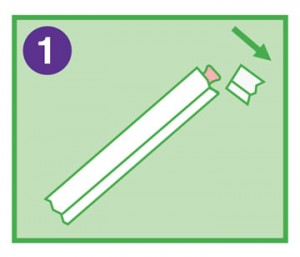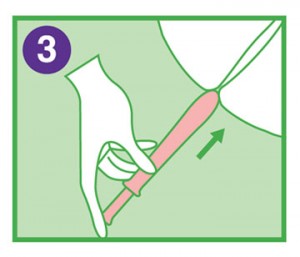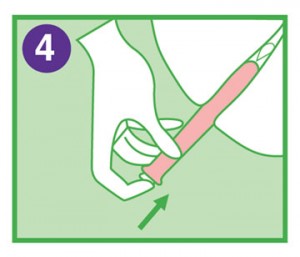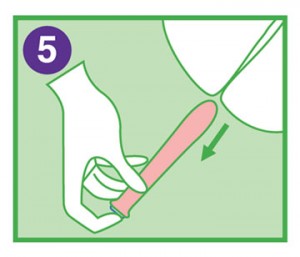FAQ





- After washing hands, open the applicator’s wrapper along the tear-line.
- Slide top portion of applicator out of the wrapper, leaving bottom portion in the wrapper. This will keep applicator’s dispensing area clean before usage. Using fingers, locate applicator’s protective tip at bottom of applicator — still in wrapper — and break it away with a quick bending movement.
- Remove applicator entirely from wrapper. While in a comfortable lying or sitting position with knees bent, gently insert open end of applicator well into the vagina.
- While inserted in vagina, press the plunger to release gel.
- Gently remove applicator from vagina, and replace in wrapper for disposal.
A healthy vaginal pH level is acidic (between 3.5 and 4.5 is optimal). Infections such as BV cannot survive in this environment. Above 4.5 is alkaline and BV thrives in an alkaline environment (7.0 is neutral = water).
Vaginal dryness is when the tissues of the vagina are not hydrated and healthy. This is caused by declining levels of estrogen in the body due to pre-menopause, menopause, childbirth and breastfeeding, radiation or chemotherapy treatment for cancer, a hysterectomy, or anti-estrogen medications. Dryness can also be caused by douching, or imbalanced pH levels brought on by sexual intercourse or the end of a menstrual period. Symptoms of vaginal dryness can include itching, burning, or general vaginal discomfort.
Fresh: After your period, before or after sex, after douching or anytime additional vaginal freshness is desired.
Revive: 2 to 3 times per week or anytime you are experiencing vaginal discomfort caused by dryness.
Select the product that best suits your needs and use only one product at a time so as not to reduce the efficacy of each product. There is no danger though in using all three products.
For example, you could use Fresh first to cleanse, the following day you could use Revive to moisturize.
BV is a bacterial infection caused by a pH imbalance. Symptoms include a foul-smelling vaginal discharge that appears grayish white or yellow. A “fishy” smell that worsens after sex is another sign of BV.
A yeast infection is an overgrowth of yeast cells (a fungus) that are naturally present in the vagina. This is caused by a pH imbalance. Symptoms include itching or soreness in the vagina, sometimes pain or burning when you urinate or have sex. Some women also have a thick, clumpy, white discharge that has no odor and looks a little like cottage cheese. These symptoms are more likely to occur during the week before your menstrual period.

